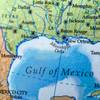ABS, the classification society of record for the damaged product tanker Castor, has stepped up its assistance efforts in response to the continuing failure of any nation to offer the vessel a port of refuge.
"It has been 10 days since this ship arrived at a port seeking refuge," ABS President Robert D. Somerville noted. "If that refuge had been granted the vessel would be heading to a repair yard by now. Since it has not, our concern for the safety of the vessel continues to escalate."
ABS suspended classification of the Castor on January 4, pending resolution of the casualty damage. "This is standard procedure when there has been significant damage," ABS Chief Surveyor Gus Bourneuf explained. "We are continuing to work closely with the owner in its attempts to safeguard the vessel." The vessel underwent its last annual survey in August 2000. No outstanding recommendations were recorded. It underwent Intermediate Survey in November 1999 and was not due for the next special survey until June of 2002. The ABS surveyor attending the vessel after the casualty also confirmed that it appeared to be well maintained.
ABS formed a crisis management team following the report of the casualty comprised of senior executives of both the classification society and the affiliated ABS Group Inc. That company has been providing Rapid Response Damage Assessment services to the owner from the outset including a detailed lightering sequence that would minimize any stresses placed on the damaged section of the deck.
"We have now transferred the crisis management team to London from our Houston headquarters to be closer to the situation and to work more closely with the owner," said Somerville. "We have also augmented it with additional survey experts from the U.S. and Greece as our concern for the vessel grows."
The Castor is one of three vessels built to ABS class in 1976 and 1977 by Korea Shipbuilding & Engineering. The other two vessels were transferred out of ABS class in the mid-1980's. ABS has also identified four other vessels built to similar dimensions at the same shipyard between 1975 and 1982, two of which remain in ABS class. "As is done after any significant casualty, we are undertaking a detailed review of the survey histories of all these vessels, and are in touch with the other classification societies of record," confirmed Bourneuf.
Sponsored Content
Experience Custom Yacht Signs and Designs Tailored to Perfection!

April 2025
 Read the Magazine
Read the Magazine

 Read the Magazine
Read the Magazine
This issue sponsored by:

Navigating the Future of the Maritime Industry
Subscribe for
Maritime Reporter E-News
Maritime Reporter E-News is the maritime industry's largest circulation and most authoritative ENews Service, delivered to your Email five times per week








